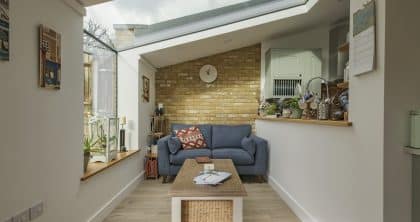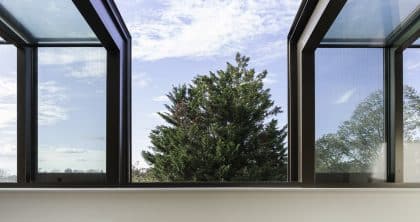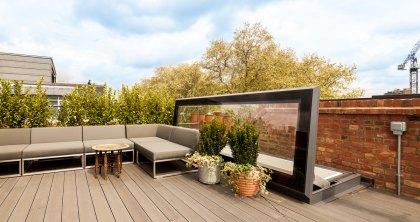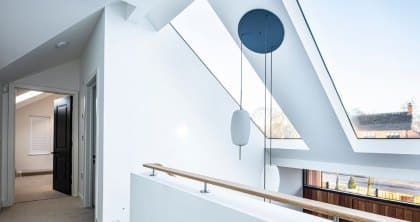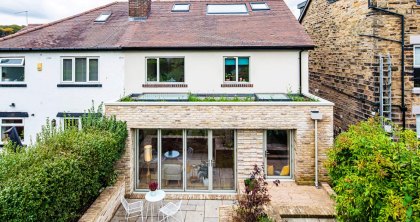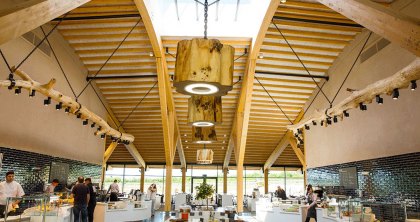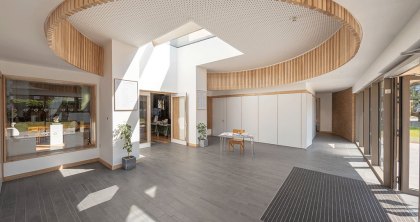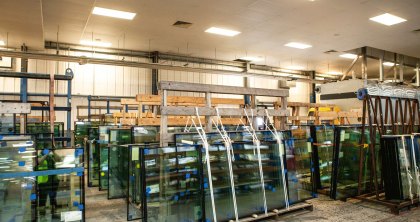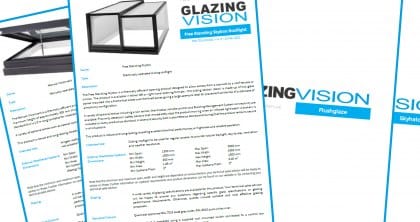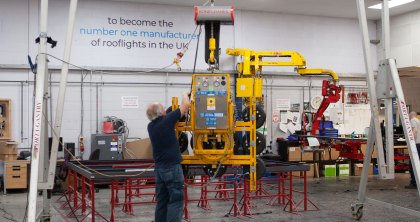In any construction project, having an early idea of likely material specifications is helpful to avoid last minute shocks and surprises. It’s particularly relevant to rooflights and roof windows, though, because designing a healthy building means not taking quoted U-values at face value.
The composition of roof glazing units – including overall size, relative areas of glazing and frame, and the thermal performance of the materials used – varies, so U-values quoted in a specification should be based on an actual product or a detailed calculation model.
Unfortunately, there exists an element of misunderstanding and potential confusion when specifying U-values for rooflights. A performance specification may not be clear about whether a whole-unit or centre pane value is required, and some manufacturers are not clear about which they are quoting.
What is a centre pane U-value?
Centre pane U-values address the thermal performance of the glass only. They appear lower because the cold bridging effect of the spacer and edge seal are not accounted for. Where two different types of glass are being considered for the same frame, centre pane values are a useful comparison tool.
Conservation projects make good use of centre pane values, because traditional frame designs offer no meaningful thermal performance but the glass needs to be shown to help achieve regulatory compliance.
In most other circumstances U-values should be for the whole unit, including glazing and frame, but too many manufacturers still rely on quoting centre pane U-values.
What are the risks of relying on centre pane values?
Specifiers can find themselves misled if two similar products are declared in different ways and a centre pane value is mistaken as a better performing product.
Explaining their performance claims and being able to back them up is an important role for manufacturers in helping to deliver energy efficient building projects – especially since declarations based on centre pane values go against building regulations.
How thick should a rooflight frame be?
The ratio of frame to glass has a direct correlation with a product’s thermal performance. The current trend in rooflight specification is for less frame and more glass, but the frame has to accommodate the technology and design features that deliver low U-values. Work to improve the performance of rooflights has actually resulted in ‘chunkier’ products, although each should be assessed on its own merits.
At face value, choosing one large roof window over two smaller ones is typically better in terms of heat loss, because there is more glass and less frame.
Taking a holistic approach to the building design, however, a number of smaller units in different parts of the roof can deliver better illumination of the space. If the goal is to maximise the number of natural daylight hours and limit the use of artificial lighting, then the compromise of more frame is acceptable.
Frames are typically manufactured from timber, plastics, aluminium and steel, or are composites of metal and plastic or wood. The choice of materials is driven by thermal performance requirements, a desire to use sustainable materials, structural performance, or simply the aesthetic.
Working with a manufacturer who can accurately model the performance of different specifications of rooflight and produce calculations to prove those claims – particularly where bespoke products are desirable or a necessity – is an important step towards having confidence in a design and knowing it can be delivered on site.
This topic is explored in our ‘Thermal Performance of Roof Glazing’ white paper, available to download for free here.

